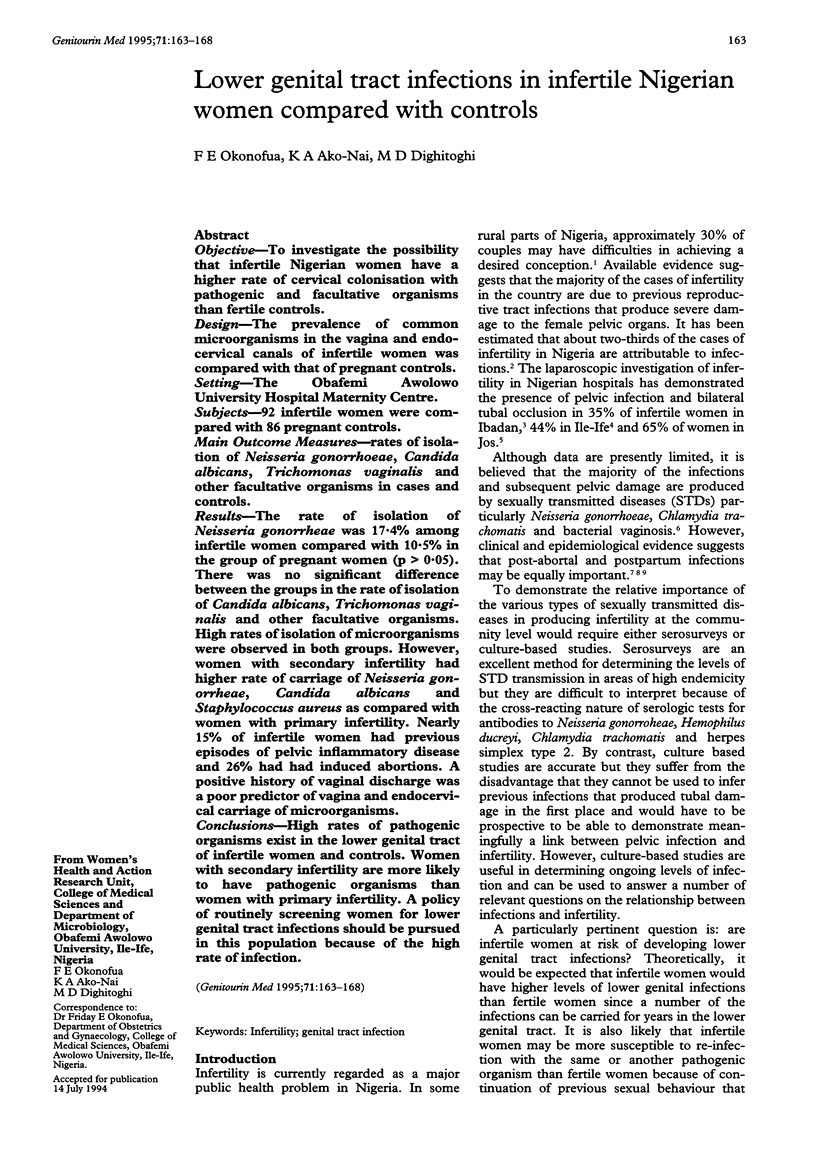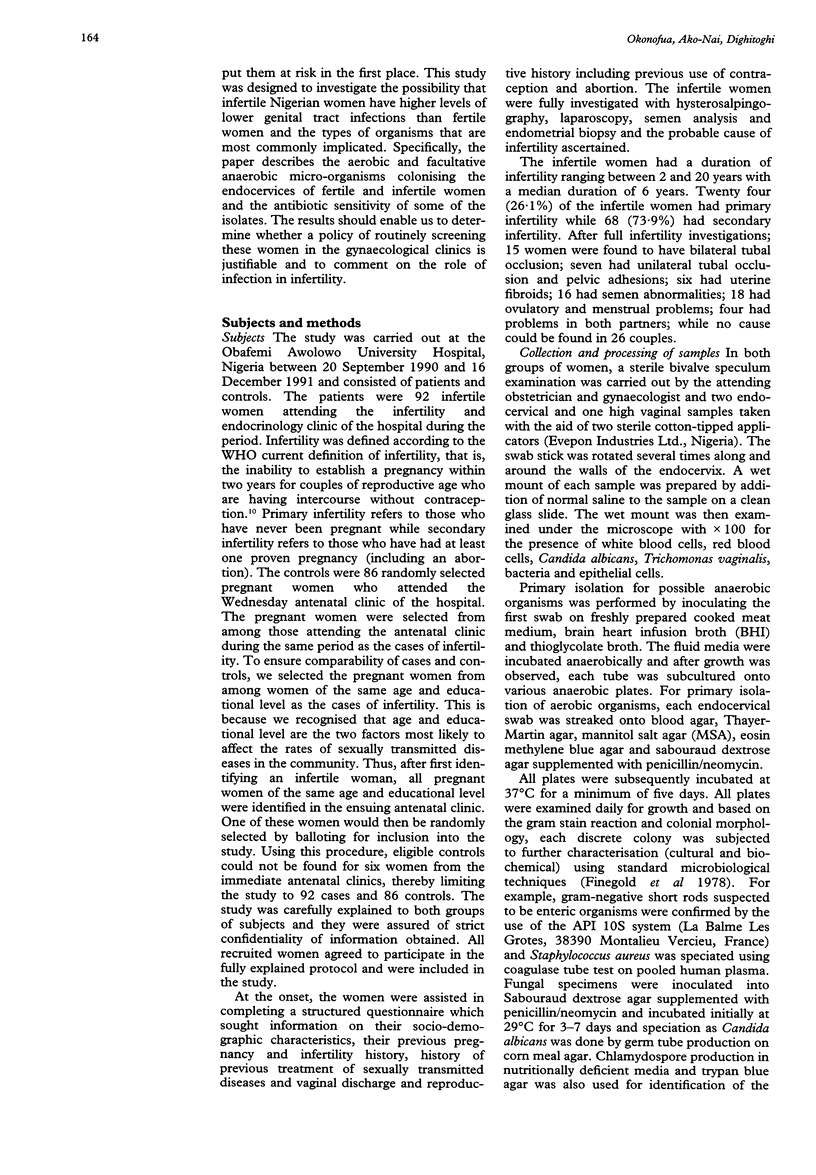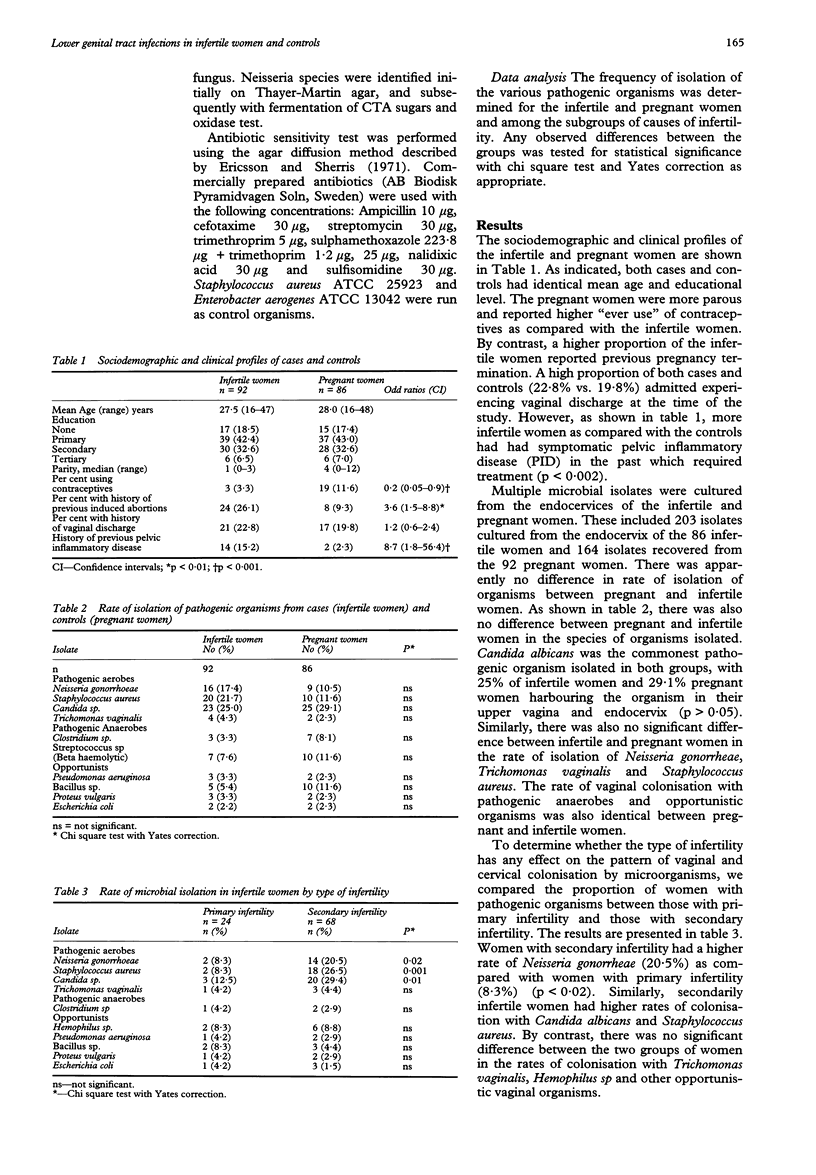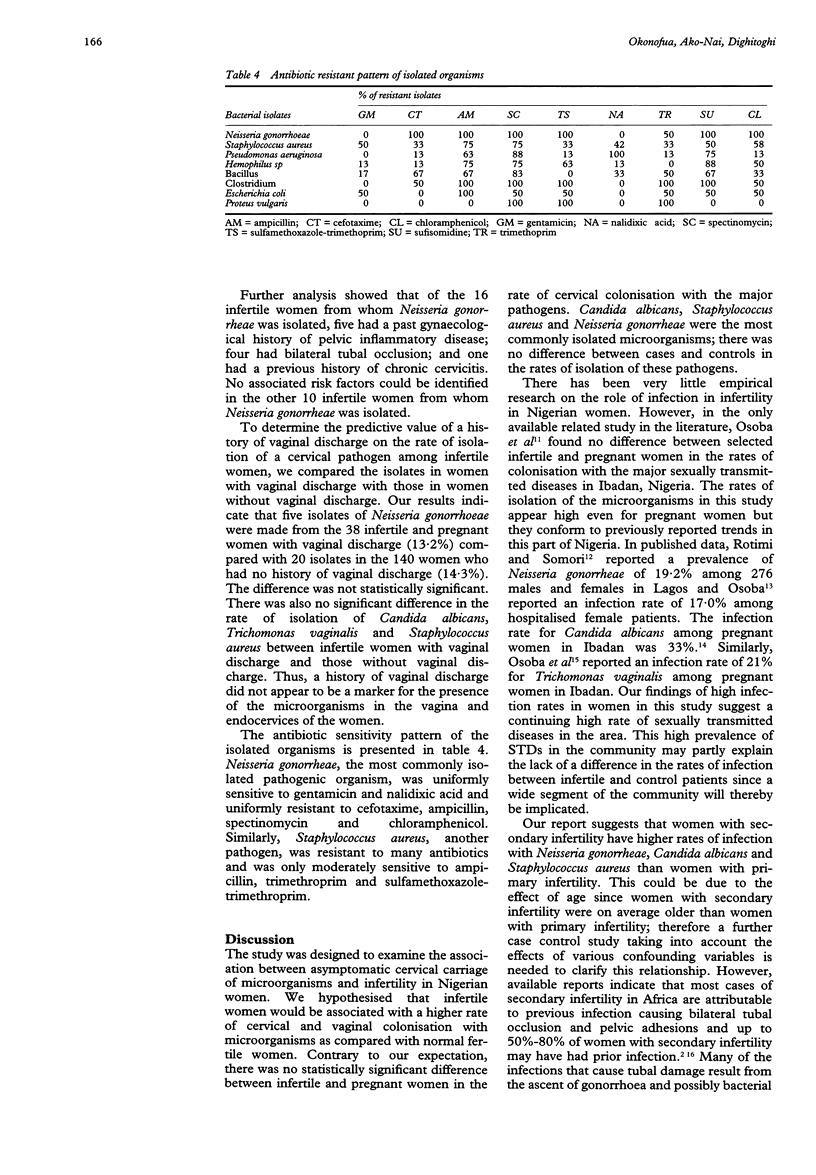Abstract
OBJECTIVE--To investigate the possibility that infertile Nigerian women have a higher rate of cervical colonisation with pathogenic and facultative organisms than fertile controls. DESIGN--The prevalence of common microorganisms in the vagina and endocervical canals of infertile women was compared with that of pregnant controls. SETTING--The Obafemi Awolowo University Hospital Maternity Centre. SUBJECTS--92 infertile women were compared with 86 pregnant controls. MAIN OUTCOME MEASURES--rates of isolation of Neisseria gonorrhoeae, Candida albicans, Trichomonas vaginalis and other facultative organisms in cases and controls. RESULTS--The rate of isolation of Neisseria gonorrheae was 17.4% among infertile women compared with 10.5% in the group of pregnant women (p > 0.05). There was no significant difference between the groups in the rate of isolation of Candida albicans, Trichomonas vaginalis and other facultative organisms. High rates of isolation of microorganisms were observed in both groups. However, women with secondary infertility had higher rate of carriage of Neisseria gonorrheae, Candida albicans and Staphylococcus aureus as compared with women with primary infertility. Nearly 15% of infertile women had previous episodes of pelvic inflammatory disease and 26% had had induced abortions. A positive history of vaginal discharge was a poor predictor of vagina and endocervical carriage of microorganisms. CONCLUSIONS--High rates of pathogenic organisms exist in the lower genital tract of infertile women and controls. Women with secondary infertility are more likely to have pathogenic organisms than women with primary infertility. A policy of routinely screening women for lower genital tract infections should be pursued in this population because of the high rate of infection.
Full text
PDF





Selected References
These references are in PubMed. This may not be the complete list of references from this article.
- Catterall R. D. Presidential Address to the M.S.S.V.D. Systemic disease and the biological false positive reaction. Br J Vener Dis. 1972 Feb;48(1):1–12. doi: 10.1136/sti.48.1.1. [DOI] [PMC free article] [PubMed] [Google Scholar]
- De Muylder X., Laga M., Tennstedt C., Van Dyck E., Aelbers G. N., Piot P. The role of Neisseria gonorrhoeae and Chlamydia trachomatis in pelvic inflammatory disease and its sequelae in Zimbabwe. J Infect Dis. 1990 Aug;162(2):501–505. doi: 10.1093/infdis/162.2.501. [DOI] [PubMed] [Google Scholar]
- Okonofua F. E., Essen U. I., Nimalaraj T. Hysterosalpingography versus laparoscopy in tubal infertility: comparison based on findings at laparatomy. Int J Gynaecol Obstet. 1989 Feb;28(2):143–147. doi: 10.1016/0020-7292(89)90474-8. [DOI] [PubMed] [Google Scholar]
- Okonofua F. E., Onwudiegwu U., Odunsi O. A. Illegal induced abortion: a study of 74 cases in Ile-Ife, Nigeria. Trop Doct. 1992 Apr;22(2):75–78. doi: 10.1177/004947559202200209. [DOI] [PubMed] [Google Scholar]
- Otolorin E. O., Ojengbede O., Falase A. O. Laparoscopic evaluation of the tuboperitoneal factor in infertile Nigerian women. Int J Gynaecol Obstet. 1987 Feb;25(1):47–52. doi: 10.1016/0020-7292(87)90183-4. [DOI] [PubMed] [Google Scholar]
- Otubu J. A., Sagay A. S., Dauda S. Hysterosalpingogram, laparoscopy and hysteroscopy in the assessment of the infertile Nigerian female. East Afr Med J. 1990 May;67(5):370–372. [PubMed] [Google Scholar]
- Rotimi V. O., Somorin A. O. Sexually transmitted diseases in clinic patients in Lagos. Br J Vener Dis. 1980 Feb;56(1):54–56. doi: 10.1136/sti.56.1.54. [DOI] [PMC free article] [PubMed] [Google Scholar]


